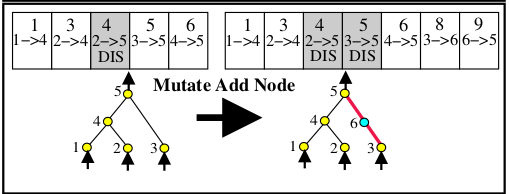When a new node is added, the previous connection is disabled and not removed.
Is there any situation in which a connection gene is removed? For example, in the above diagram connection gene with innovation number 2 is not present. It could be because some other genome used that innovation number for a different connection that isn't present in this genome. But are there cases where a connection gene has to be removed?

